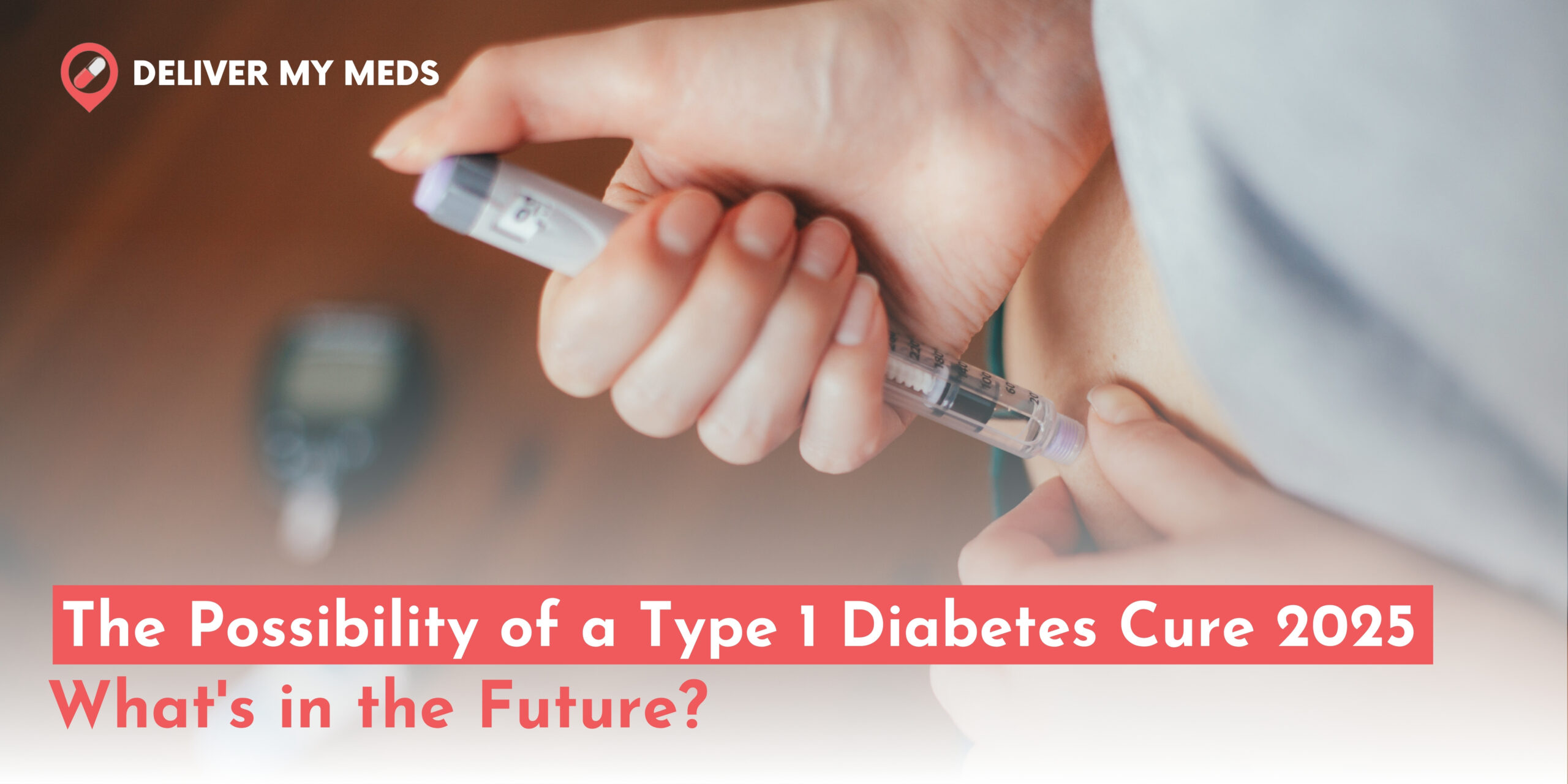
Type 1 diabetes (T1D) is an autoimmune disease that has affected millions worldwide. Unlike Type 2 diabetes, which is more associated with lifestyle factors, Type 1 diabetes is typically diagnosed in childhood or adolescence and occurs when the body’s immune system mistakenly attacks and destroys insulin-producing beta cells in the pancreas. This leads to a lifelong dependence on insulin injections or pumps to regulate blood sugar levels.
Throughout recent decades, various people have attempted to find an antidote or a cure for Type 1 diabetes. Much has changed, starting with how treatment and management are addressed. The months of 2025 will bring an exciting discovery that can change the way treatments approach Type 1 diabetes. Explore the possibility of a Type 1 Diabetes Cure 2025, the science, and the most promising innovations behind it, which could make a cure for Type 1 diabetes possible.
Understanding Type 1 Diabetes
Before imagining a cure, it is critical to understand Type 1 diabetes. In someone who has T1D, their immune system fails to recognize and destroys the beta cells within the pancreas, which are necessary for insulin production. So, the body cannot produce insulin and will need the aid of external insulin to regulate blood sugar levels.
Unlike Type 2 diabetes, which can be prevented or controlled through diet and medication, Type 1 diabetes is considered an untreatable condition. However, because of breakthroughs in medical science, most researchers believe that a cure for the disease may soon be discovered.
Advancements in Type 1 Diabetes Cure 2025
Some up-and-coming research lines are underway on different aspects of Type 1 diabetes. Amongst these, the following are a few of the most promising breakthroughs that can open the path to a cure soon:
1. Immunotherapy: Targeting the Immune System
One of the primary difficulties that is likely to present in curing Type 1 diabetes will be the self-destructive activity of autoimmune destruction of the beta cells. Instead, the current research direction includes immunotherapies to interrupt or reverse this immune assault, sparing the remaining immune cells.
- Anti-CD3 antibodies: Now, an anti-CD3 monoclonal antibody, teplizumab, has been demonstrated in the clinic to retard the progression of Type 1 diabetes. This is an immune modulatory approach: an immune system modulation that will not attack the beta cells. By 2025, research will further perfect this treatment and provide a way of halting or slowing down the autoimmune process.
- Vaccines and Antibodies: A couple of different approaches to new vaccine therapies to protect beta cells include vaccines aimed at preventing an attack by the immune system on those cells. These vaccines may regrow a part of your lost beta cell structure. Both approaches could dramatically stop the beginning onset of type 1 or its steady advancement after diagnosis.
2. Beta Cell Regeneration and Transplants
The primary aim of all research on a cure is to restore the insulin-producing beta cells. Some studies focus on how the cells in the pancreas can be regenerated, while others aim at completely replacing them.
- Stem Cell Therapy: Regeneration of Insulin-producing beta cells in patients is a hopeful cure for Type 1 diabetes. It involves the application of stem cell technology to regenerate functioning beta cells. By 2025, one would expect such innovations toward producing functioning beta cells in the laboratory for direct transplantation into patients and restoring their normal insulin production.
- Islet Cell Transplants: The second area of research is the transplantation of healthy functioning insulin-producing cells (islet cells) taken from a donor pancreas. This is still in its infancy, and problems such as immune rejection do exist, but advances in immunosuppressive drugs and stem cell research may one day bring this into practice.
3. Artificial Pancreas and Closed-Loop Systems
Though not a cure, artificial pancreas may someday help patients with Type 1 diabetes improve their quality of life by automating the regulation of blood sugar.
- Closed-Loop Systems: These will be a mix of CGMs and insulin pumps. Such systems will automatically administer insulin according to the actual, in-real-time glucose values. More advanced this will be with AI-based algorithms that predict a trend in the glucose values, thereby adjusting the delivery of insulin according to anticipated alterations by 2025.
- Artificial Pancreas: An artificial pancreas is meant to be the closest thing to an actual pancreas. When the technology is advanced, the bionic pancreas might also make insulin injections almost insignificant, making it actually possible to regulate blood sugar.
4. Gene Editing: CRISPR and Beyond
Gene editing technologies, especially CRISPR-Cas9 technology, allow for the direct alteration of DNA in cells in the body. This would offer a direct approach to correcting the genetic predisposition for autoimmune diseases like Type 1 diabetes.
- Gene Therapy for T1D: Researchers in the not-so-distant future may exploit gene editing technology to either modify genes that result in an immune response against the beta cells or engineer the body’s cells so they are not responsive to that immune response. Though gene therapy is still considered a laboratory phenomenon, by 2025, scientists could have reached a milestone, making these practices safer and more efficient.
5. Advanced Insulin and Drug Delivery Systems
They also advance improvements in insulin and drug delivery systems, which will make the treatment of diabetes much more efficient and less burdensome for patients with this condition.
- Newness in Insulin: Research to develop new ways of formulating insulins so that they are faster or longer-lasting is still a hot topic. Besides, a study exists on “smart” insulins that activate themselves when blood glucose levels reach a specific value; hence, the promises are to provide much more efficient and noninvasive treatment.
- Nanotechnology: Some of the more exciting areas are drug delivery with the application of nanotechnology. Scientists may apply nanobots or other nano-sized carriers that could deliver insulin or other therapeutic agents directly to target cells to minimize side effects and increase treatment efficacy.
What Would a Cure Look Like?
While we cannot predict precisely when a cure for Type 1 diabetes will be discovered, the advances already made in 2025 are pretty exciting in getting close to the thing that will finally give us that lasting cure. Here is how the ideal cure might look:
- Full Restoration of Insulin Production: A cure would be when the pancreas can produce insulin again without the support of external injections or pumps.
- Permanent Stop of the Autoimmune Process: A cure should be able to prevent the immune system from destroying the beta cells in the first place or allow the body to replace those cells without fear of further damage.
- Better Life Quality: As a patient restores insulin production from the beta cell, they need no longer live worrying about their changeable blood glucose levels.
Conclusion: Will Type 1 Diabetes Cure Reach in 2025?
Although there will not be a cure for type 1 diabetes in 2025, scientific research is progressing to study the disease and treat its fundamental causes. Future treatments include immunotherapies, stem cell treatments, artificial pancreas, and gene editing. The use of CGM devices will enable diabetic patients to continuously monitor their glucose levels and cure type 1 diabetes.
For now, Type 1 diabetic patients have to live with the current treatments. But all this research and innovation continues, and a cure may be around tomorrow. In the meantime, the hope held out is as enormous as the advances made, and the future of Type 1 diabetes has never looked more promising.



